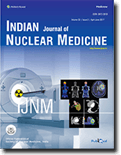
Indian Journal of Nuclear Medicine
Scope & Guideline
Shaping the Landscape of Diagnostic Excellence
Introduction
Aims and Scopes
- Diagnostic Imaging Techniques:
The journal focuses on various imaging modalities such as Positron Emission Tomography (PET), Single-Photon Emission Computed Tomography (SPECT), and hybrid imaging approaches, promoting advancements in diagnostic accuracy and patient management. - Therapeutic Applications of Nuclear Medicine:
It covers the therapeutic aspects of nuclear medicine, including radionuclide therapy and radiotheranostics, which combine diagnosis and treatment to improve patient outcomes. - Clinical Research and Case Studies:
The journal publishes original research and case reports that explore novel findings and methodologies in nuclear medicine, contributing to evidence-based practices. - Technological Innovations and Methodologies:
A significant emphasis is placed on the development and validation of new radiopharmaceuticals and imaging techniques, including image processing methods and dosimetry. - Multidisciplinary Approach:
The journal encourages a multidisciplinary approach by integrating findings from nuclear medicine with other specialties such as oncology, cardiology, and endocrinology, fostering collaborative research.
Trending and Emerging
- Radiotheranostics in Cancer Care:
A growing focus on radiotheranostics, which combines targeted therapy with imaging for personalized cancer treatment, is evident, showcasing the journal's commitment to advancing patient-specific therapeutic strategies. - Artificial Intelligence and Machine Learning:
The integration of artificial intelligence (AI) and machine learning in nuclear medicine is gaining traction, with research exploring its applications in image analysis, predictive modeling, and enhancing diagnosis accuracy. - Novel Radiopharmaceuticals and Tracers:
There is an increasing emphasis on the development and clinical application of novel radiopharmaceuticals and imaging tracers, particularly for targeted therapies and improved diagnostic capabilities. - Multimodal Imaging Techniques:
Research on multimodal imaging approaches that combine PET, SPECT, and MRI is on the rise, reflecting a trend towards comprehensive imaging strategies for better disease characterization. - Patient-Centric Studies and Quality of Life Assessments:
Emerging themes include a focus on patient outcomes, quality of life assessments, and the psychosocial impact of nuclear medicine interventions, highlighting a shift towards holistic patient care.
Declining or Waning
- Traditional Imaging Techniques:
There is a noticeable decrease in publications focusing solely on traditional imaging techniques, such as planar scintigraphy, as the field moves towards more advanced hybrid imaging methods. - Basic Research in Radiopharmaceutical Chemistry:
Research centered on the basic chemistry of radiopharmaceuticals has become less prominent, likely due to a shift towards clinical applications and the development of ready-to-use radiopharmaceuticals. - Pediatric Nuclear Medicine:
Pediatric applications in nuclear medicine appear to be declining, potentially due to the increasing specialization in this area and the focus on adult populations in clinical studies. - General Reviews and Non-specific Case Reports:
The journal is moving away from general reviews and non-specific case reports, favoring more targeted studies that provide significant clinical insights or novel methodologies. - Historical Perspectives and Legacy Case Studies:
There is a diminishing interest in publishing historical perspectives or legacy case studies that do not contribute directly to current clinical practices or technological advancements.
Similar Journals
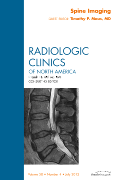
RADIOLOGIC CLINICS OF NORTH AMERICA
Shaping the Future of Radiology Through Insightful Research.Radiologic Clinics of North America, published by W B Saunders Co-Elsevier Inc, stands as a pivotal resource in the field of medical imaging and radiology. With a solid history dating back to 1963 and converging years extending to 2024, this journal has established itself as a reputable platform for original research, comprehensive reviews, and insightful discussions that advance the knowledge and practice of radiology, nuclear medicine, and imaging. Holding a Q2 classification in both the miscellaneous medicine and radiology categories and positioned within the 56th percentile among its peers, its contributions are vital for both academic research and clinical applications. Although it does not offer open access, the journal remains accessible through institutional subscriptions and is a must-read for researchers, healthcare professionals, and students keen on the latest developments in radiological practices. With a dedicated editorial board and a commitment to the highest academic standards, Radiologic Clinics of North America continues to shape the future of the medical imaging field.

Revista Espanola de Medicina Nuclear e Imagen Molecular
Bridging Theory and Practice in Radiology InnovationsRevista Española de Medicina Nuclear e Imagen Molecular, published by Elsevier España SLU, stands as a vital resource in the field of Radiology, Nuclear Medicine, and Molecular Imaging. With an ISSN of 2253-654X, this journal is committed to disseminating high-quality research and advancements in clinical practices, aiming to bridge the gap between theoretical research and application in healthcare. Operating since 2012, it features a robust archive of peer-reviewed articles and case studies, although it currently holds a Q4 ranking in the Scopus category, indicating significant potential for growth and influence within the academic community. The journal is indexed in Scopus, with a rank of 255 out of 333, placing it in the 23rd percentile, which underlines the need for increased contributions from researchers eager to enhance its standing. While it is not an open-access journal, its availability through libraries and institutions ensures that a wide audience can access critical findings and innovations in the rapidly evolving field of nuclear medicine. As we look towards the convergence period from 2012 to 2024, Revista Española de Medicina Nuclear e Imagen Molecular aspires to fortify its role as a cornerstone for collaboration and advancement in nuclear imaging and radiology.

Nuclear Medicine and Molecular Imaging
Transforming Research into Revolutionary Medical SolutionsNuclear Medicine and Molecular Imaging, published by SPRINGER HEIDELBERG, stands as a pivotal platform in the interdisciplinary field of radiology and nuclear medicine, focusing on innovative research and developments from 2010 to 2024. With its ISSN 1869-3474 and E-ISSN 1869-3482, this journal aims to disseminate advanced studies that explore the diagnostic and therapeutic applications of nuclear medicine technologies. Operating from Germany, it has positioned itself in the Q3 category within the Radiology, Nuclear Medicine and Imaging sector, showcasing its relevance among peer journals, with a Scopus rank of #204 out of 333. This journal not only serves as an essential resource for researchers and practitioners eager to stay abreast of modern methodologies and findings but also underscores the crucial advancements in molecular imaging techniques. Although currently not an open-access journal, it doesn't detract from its mission to promote knowledge exchange among academia and the medical community, thus paving the way for innovative solutions and improved patient care in nuclear medicine.
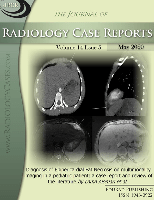
Journal of Radiology Case Reports
Advancing Radiological Insights Through Unique Case StudiesThe Journal of Radiology Case Reports is a pioneering open-access journal dedicated to the publication of original case reports in the field of radiology, providing a crucial platform for the dissemination of valuable clinical insights and advancements in diagnostic imaging. Published by EDURAD since 2008, this journal aims to bridge the gap between clinical practice and ongoing research by showcasing unique cases that can enhance diagnostic accuracy and patient care. With an ISSN of 1943-0922, the journal is committed to excellence, evidenced by its current ranking in the Scopus database, where it stands at position #253 among 333 titles in the field, corresponding to a 24th percentile. The journal is indexed in notable databases and features an HIndex reflective of its ongoing contribution to medical literature. Researchers, professionals, and students can access insightful articles covering diverse case scenarios, thus enriching their knowledge of medical laboratory technology and enhancing their expertise in radiology, nuclear medicine, and imaging. The journal not only provides a wide reach through its open access model but also encourages collaborative research efforts, fostering the rapid circulation of case-based knowledge essential to the evolving landscape of radiological science.

Tomography
Advancing medical imaging through innovative research.Tomography is an esteemed peer-reviewed journal published by MDPI, focusing on a broad spectrum of topics related to medical imaging and diagnostics. Launched in 2015, this Open Access journal serves as a vital platform for researchers, professionals, and students in the fields of medicine, radiology, nuclear medicine, and imaging. With an impressive impact factor reflecting its relevance, the journal has achieved a quartile ranking of Q2 in both Medicine (Miscellaneous) and Radiology, Nuclear Medicine, and Imaging as of 2023. Renowned for disseminating high-quality research, Tomography welcomes original research articles, reviews, and technical notes, fostering innovation and collaboration within the scientific community. Housed in Basel, Switzerland, the journal aims to bridge the gap between fundamental research and clinical application, appealing to a diverse readership eager to advance the field of medical imaging.

EUROPEAN JOURNAL OF RADIOLOGY
Enhancing Knowledge, Improving Imaging PracticesThe European Journal of Radiology, published by Elsevier Ireland Ltd, is a premier peer-reviewed journal in the fields of radiology, nuclear medicine, and imaging. Established in 1981, it has carved a significant niche within the academic community, showcasing innovative research that enhances medical imaging practices and improves patient care. With an impressive ranking in the Q1 category for both Medicine (miscellaneous) and Radiology, Nuclear Medicine, and Imaging in 2023, the journal is recognized globally for its commitment to advancing scientific knowledge and improving imaging methodologies. The journal's Scopus ranking of #60/333, placing it in the 82nd percentile, underlines its reputation for high-quality research and scholarly contributions. While traditionally a subscription-based journal, it continually evolves to meet the demands of the academic landscape, aiming to bridge the gap between research and clinical practice. Researchers, healthcare professionals, and students alike can benefit from exploring its extensive archives and current publications, which are curated to foster education and innovation in the medical imaging domain.
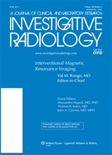
INVESTIGATIVE RADIOLOGY
Unveiling the Future of Nuclear MedicineINVESTIGATIVE RADIOLOGY, published by Lippincott Williams & Wilkins, is a premier peer-reviewed journal dedicated to disseminating innovative research in the fields of radiology, nuclear medicine, and imaging. With a notable impact factor underscored by its impressive ranking—10th out of 333 in its category, positioning it within the 97th percentile—this journal serves as a vital resource for researchers, professionals, and students eager to stay at the forefront of advancements from 1966 to 2024. Although it does not offer open access, the high-quality studies and reviews found within its pages contribute significantly to the understanding and application of modern imaging techniques. Recognized for its Q1 status in both miscellaneous medicine and radiology specializations, INVESTIGATIVE RADIOLOGY continues to play an essential role in shaping the future of diagnostic and therapeutic imaging.

Diagnostic and Interventional Imaging
Pioneering Research for Enhanced Patient CareDiagnostic and Interventional Imaging, published by Elsevier Masson, stands as a prominent journal in the fields of Radiology, Nuclear Medicine, and Imaging. With a significant impact factor and a reputation for high-quality research, this journal is dedicated to advancing the understanding and application of diagnostic and interventional imaging techniques. It has achieved an impressive Q1 ranking across multiple categories including Medicine (miscellaneous) and Radiological and Ultrasound Technology, demonstrating its esteemed position within the academic community. The journal features cutting-edge studies and reviews, reflecting the latest innovations and practices from 2012 to 2024. Researchers, healthcare professionals, and students alike can look forward to accessing valuable insights that drive forward the discipline and improve patient outcomes, as evidenced by its robust Scopus rankings placing it among the top journals in its domain.

Hong Kong Journal of Radiology
Shaping the Future of Medical Imaging ResearchHong Kong Journal of Radiology, an esteemed publication of the Hong Kong Academy of Medicine Press, serves as a vital platform for disseminating innovative research in the field of radiology, nuclear medicine, and imaging. Established in 2011 and operating under an Open Access model since 2018, this journal not only promotes the sharing of knowledge but also enhances global accessibility to cutting-edge studies. With its ISSN 2223-6619 and E-ISSN 2307-4620, the journal strives to engage a diverse audience ranging from experienced professionals to aspiring scholars in the medical imaging domain. Despite its current ranking in the Q4 quartile of the Scopus category for radiology, the journal is committed to improving its standing by featuring high-quality research that addresses pressing issues in the field. The journal's convergence from 2011 to 2024 reflects its ongoing dedication to fostering academic excellence and encouraging collaborative discourse among researchers and practitioners globally. Located in Hong Kong, the journal plays a significant role in shaping the future of radiology education and practice in China and beyond.
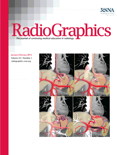
RADIOGRAPHICS
Empowering Radiologists with Cutting-edge ResearchRADIOGRAPHICS, published by the Radiological Society of North America (RSNA), is a premier academic journal dedicated to the field of radiology, nuclear medicine, and imaging. With an impressive impact factor and recognition in the top quartile (Q1) of both Medicine (miscellaneous) and Radiology, Nuclear Medicine and Imaging categories, RADIOGRAPHICS stands out as a leading platform for disseminating high-quality research and clinical findings. Since its inception in 1985 and projected to run until 2024, the journal has consistently provided essential insights into cutting-edge imaging techniques and advancements in radiological practices, making it invaluable for professionals, researchers, and students alike. Although it does not offer open access, the journal continues to flourish with a robust reputation, ranked 35th in its field according to Scopus, placing it within the 89th percentile of its category. With an unwavering commitment to enhancing the understanding and application of radiological sciences, RADIOGRAPHICS remains a pivotal resource for advancing knowledge and expertise within the medical community.